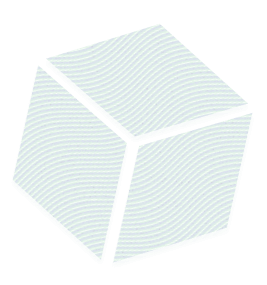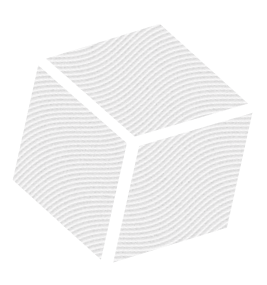
Why Choose Us as Your Mega Backdoor Roth Solo 401(k) Provider?
IRA Financial specializes in Mega Backdoor Roth Solo 401(k) plans. When you partner with us, you’ll get expert guidance, transparent flat-fee pricing, and a streamlined setup designed specifically for high-earning self-employed individuals. We simplify the process of maximizing your tax-free retirement savings, allowing you to invest confidently and efficiently.
No Hidden Fees
Flat, transparent pricing with no asset-based costs.
Expert Support
Live chat available 8AM–6PM Central Time.
Checkbook Control
Invest directly, without the need for custodian approval.
24,000+ Clients
Proudly serving over 24,000 clients across all 50 states.
Industry Expertise
Led by Roth Solo 401(k) specialists.
Dedicated Focus
100% Self-Directed Retirement solutions.

Mega Backdoor Roth Solo 401(k)
- Best plan for self-employed individuals
- Invest in almost everything you want
- Checkbook Control – serve as your own trustee
- Maximize tax deductions (up to $77,500)
- Borrow up to $50,000 tax free!
- No transaction or asset value fees
- Guaranteed IRS audit protection
Pricing Details
$999
setup fee
$399
annually

Mega Backdoor Roth Solo 401(k)
Premium Compliance
IRS tax rules and guidelines change annually. IRA Financial ensures your plan documents are updated and that your self-directed structure remains compliant and respected by the IRS.
Included with your plan
Includes…
- Mega Backdoor Roth Solo 401(k) plan document updates as required by law
- Unlimited Roth Solo 401(k) plan tax & consulting services*
- Preparation and filing of IRS Form 5500-EZ
- Expedited IRS support
- Access to exclusive webinars
- Free copies of self-directed retirement books by Adam Bergman
Have questions?
How to Start a Mega Backdoor Roth Solo 401(k) Plan
Opening a Mega Backdoor Roth Solo 401(k) with IRA Financial is straightforward. Follow these steps to set up your plan and start investing.
The Advantages of a Mega Backdoor Roth Solo 401(k)
Higher contribution limits
The Mega Backdoor Roth strategy allows you to make after-tax contributions to your Solo 401(k) and convert them to Roth, enabling total Roth contributions that can exceed standard Roth IRA and Roth Solo 401(k) limits by over $40,000 annually.

Massive tax-free growth potential
Make after-tax contributions to your Solo 401(k), then convert them to Roth for tax-free growth and qualified tax-free withdrawals in retirement.

Ability to borrow funds
Borrow up to $50,000 or 50% of your balance (whichever is lower) without taxes or penalties—ideal for emergency liquidity.

Broader investment choices
Diversify beyond conventional investments like stocks and bonds into alternative assets, including real estate, private equity, cryptocurrency, precious metals, and more, enhancing your potential for wealth accumulation.

Direct investment control
Make direct investment decisions without needing brokerage or custodian approval. With full checkbook control, you have ultimate authority to manage your Roth Solo 401(k) investments efficiently and independently.

Creditor protection
Funds within your Solo 401(k) receive strong federal creditor protection under ERISA, providing greater security for your retirement savings compared to many other investment accounts.


Our Mega Backdoor Roth Solo 401(k) vs Other Providers
Many Roth Solo 401(k) providers charge asset-based fees, limit your investment choices to traditional assets, or require custodian approval for each transaction. Our flat-fee, self-directed plan offers full investment flexibility and direct access through checkbook control—so you can act quickly and invest on your terms.
| IRA Financial | Other Providers | |
|---|---|---|
| Flat Annual Fee | Yes | No |
| $0 Account & Transaction Fees | Yes | No |
| $0 Admin & Processing Fees | Yes | No |
| Expert-Guided Investments | Yes | No |
| Guaranteed IRS Audit Protection | Yes | Yes |
| Annual Tax Consulting | Yes | No |
| Annual Reporting & Filing Service | Yes | No |
Book a Consultation
Schedule a free consultation with a member of our team to explore how opening a self-directed retirement account can unlock your ability to invest tax-free in a variety of alternative assets.
See What Our Clients Have to Say

What Alternative Assets Can You Invest in with a Backdoor Roth IRA?
A self-directed Solo 401(k) with Mega Backdoor Roth capability allows you to invest beyond traditional assets like stocks and mutual funds. Gain access to alternative investments such as real estate, private equity, cryptocurrency, precious metals, tax liens, and more—offering greater potential for diversification and long-term growth.
Real Estate
Residential, commercial, raw land, and rental properties.
Cryptocurrency
Bitcoin, Ethereum, and other digital assets.
Precious Metals
Gold, silver, and other IRS-approved metals.
Tax Liens & Deeds
Acquire property liens for potential returns.
Private Equity
Invest in startups, private companies, and venture capital.
Private Placements
Invest in a non-public company through the sale of securities.

Mega Backdoor Roth Solo 401(k) FAQs
Below are answers to common Mega Backdoor Roth Solo 401(k) questions covering eligibility, contributions, investment flexibility, and tax advantages.
What is a Roth Solo 401(k)?
A Roth Solo 401(k) is a retirement plan specifically designed for self-employed and business owners without full-time employees. It offers:
- A Mega Backdoor Roth Solo 401(k) is an advanced retirement plan for self-employed individuals and small business owners with no full-time employees (other than a spouse). It allows you to dramatically increase your Roth retirement savings beyond standard IRS limits by combining after-tax contributions with in-plan Roth conversions. Features include:
- Ultra-High Roth Contribution Potential: Contribute up to $70,000 in 2025 (or $77,500 if age 50+) using a combination of employee deferrals, employer contributions, and after-tax contributions that can be converted to Roth—far exceeding the Roth IRA and standard Roth Solo 401(k) limits.
- Tax-Free Growth & Withdrawals: After-tax contributions converted to Roth grow tax-free, and qualified withdrawals in retirement are entirely tax-free under IRS rules.
- Investment Flexibility: When set up as a self-directed plan with checkbook control, a Mega Backdoor Roth Solo 401(k) allows direct investing in both traditional and alternative assets—such as real estate, private equity, and crypto—without custodian approval.
- Loan Access: Borrow up to $50,000 or 50% of your account balance, whichever is less, tax- and penalty-free, if repaid on schedule per IRS loan rules.
What’s the Difference Between a Solo 401(k), Roth Solo 401(k), and Mega Backdoor Roth Solo 401(k)?
These three plans can get confusing, here’s a breakdown of the differences:
A Solo 401(k) is a retirement plan for self-employed individuals and small business owners with no full-time employees (other than a spouse). It allows for high annual contributions through a combination of pre-tax employee deferrals and employer profit-sharing contributions, offering tax-deferred growth and tax deductions today.
- 2025 limit: Up to $70,000 (or $77,500 if 50+)
- Contributions reduce taxable income now
- Withdrawals are taxable
A Roth Solo 401(k) is a type of Solo 401(k) that lets you make Roth contributions. These contributions grow tax-free, and qualified withdrawals in retirement are also tax-free.
- No upfront tax break
- Tax-free qualified withdrawals
- Ideal for those expecting higher taxes in retirement
A Mega Backdoor Roth Solo 401(k) is a more advanced setup that allows after-tax, non-Roth contributions beyond the standard Roth limit—then converts them to Roth. This strategy enables you to potentially contribute the entire 401(k) limit to Roth each year, if your plan allows it.
- Uses after-tax contributions + in-plan Roth conversions
- Requires a custom plan design (not supported by most brokerages)
- Enables dramatically higher Roth contributions than any other method
- Often paired with checkbook control and broader investment flexibility
Who is eligible for a Roth Solo 401(k)?
To be eligible for a Mega Backdoor Roth Solo 401(k), you must be:
- Self-employed or the owner of a small business with no full-time employees other than yourself and possibly your spouse
- Earning self-employment income from freelance work, consulting, sole proprietorship, LLC, S-corp, or similar
This setup is ideal for high-income earners who want to maximize Roth contributions well beyond traditional IRS limits.
What are the contribution limits of a Roth Solo 401(k)?
For 2025, a Solo 401(k)—including the Roth option—has a total annual contribution limit of $73,500 (or $77,500 if you’re age 50 or older). This total includes:
- Employee deferrals: Up to $23,000 (or **$30,500 if 50+), which can be designated as either Roth (after-tax) or traditional (pre-tax)
- Employer profit-sharing contributions: Up to 25% of net self-employment income (always pre-tax)
- After-tax contributions (only in custom plans): These are non-Roth, after-tax contributions that can be converted to Roth through the Mega Backdoor Roth strategy
Important: Standard Roth Solo 401(k) plans only allow Roth contributions on the employee deferral portion. To contribute more than $23,000/$30,500 to Roth, your plan must support after-tax contributions and in-plan Roth conversions.
What can I invest in with a Mega Backdoor Roth Solo 401(k)?
With a Mega Backdoor Solo Roth 401(k) you can invest it:
- Real Estate – Buy rental properties, raw land, or commercial real estate.
- Cryptocurrency – Invest in Bitcoin, Ethereum, and other digital assets
- Private Equity – Fund startups, private businesses, or venture capital
- Tax Liens & Deeds – Purchase tax lien certificates for potential returns.
- Precious Metals – Buy IRS-approved gold, silver, and platinum.
Prohibited investments include collectibles and transactions involving disqualified persons (e.g., yourself or immediate family).
Can I take a loan from my Mega Backdoor Roth Solo 401(k)?
Yes—Mega Backdoor Roth Solo 401(k) plans allow participant loans as long as your plan document includes a loan provision.
- You can borrow up to $50,000 or 50% of your account balance, whichever is less
- The loan is tax- and penalty-free, provided it is repaid within 5 years with interest (usually prime rate + 1%)
No credit check is required, and the process is entirely self-directed if you have checkbook control
Do Roth Solo 401ks have Required Minimum Distributions (RMDs)?
Beginning in 2024, thanks to the SECURE Act 2.0, the RMD rules have changed. Roth Solo 401(k) accounts are no longer required to take RMDs during the account owner’s lifetime. This rule mirrors how Roth IRAs work.

Ready to plan for your future?
Take control of your retirement by investing in alternative assets like real estate, cryptocurrency, businesses, and more. Start creating wealth today by opening an account.
Related Articles


Top Self-Directed IRA Benefits for Maximizing Your Retirement
